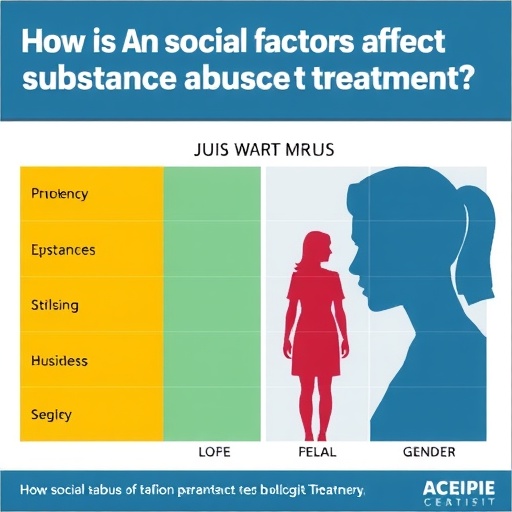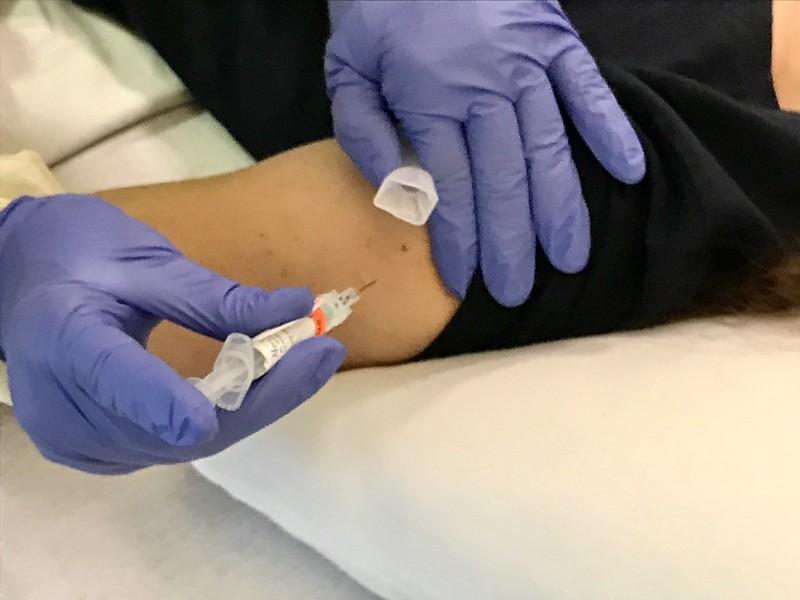Report on Fetal Growth Restriction and its Implications for Sustainable Development Goals
Introduction: Aligning Maternal and Child Health with SDG 3
Fetal Growth Restriction (FGR) represents a significant challenge to global health initiatives, directly impacting the achievement of Sustainable Development Goal 3 (SDG 3), which aims to ensure healthy lives and promote well-being for all ages. FGR, often stemming from placental insufficiency (1), is a leading cause of neonatal morbidity and mortality (3), undermining progress towards SDG Target 3.2, which seeks to end preventable deaths of newborns and children under 5 years of age. The difficulty in consistently detecting FGR antenatally further complicates efforts to mitigate its impact (2).
Neurological Impact of Fetal Growth Restriction: A Barrier to SDG 4 and SDG 10
The consequences of FGR extend beyond immediate perinatal health, posing a substantial threat to SDG 4 (Quality Education) and SDG 10 (Reduced Inequalities). Research demonstrates that FGR profoundly alters brain development, leading to long-term neurodevelopmental impairments that can hinder educational attainment and perpetuate cycles of disadvantage.
- Structural Brain Alterations: Infants with FGR exhibit significant changes in brain structure, including reduced brain volumes, altered white matter microstructure, and delayed cerebral maturation (4, 5, 9, 16, 21, 35, 58). Volumetric MRI studies confirm these deficits in both fetal and neonatal stages (17, 18).
- Cortical Development Disruption: The condition affects cortical morphology, including gyrification, sulcal depth, and cortical thickness (33, 35, 36). These changes are critical, as cortical structure is closely linked to cognitive function (28, 34). Specific regions involved in emotion, memory, and cognition, such as the cingulate cortex, temporal pole, and parahippocampus, are particularly vulnerable (47, 49, 52).
- Long-Term Neurodevelopmental Outcomes: The structural brain changes manifest as adverse neurodevelopmental outcomes. Children born with FGR are at higher risk for cognitive dysfunction, behavioral issues, and the need for special educational support (7, 8, 10, 11, 15), creating significant barriers to achieving quality education for all.
Advanced Methodologies for Research and Diagnosis
Addressing the challenges of FGR requires innovation in diagnostic and research methodologies, aligning with SDG 9 (Industry, Innovation, and Infrastructure). The scientific literature highlights a range of advanced techniques used to understand and quantify the impact of FGR on the brain.
- Advanced MRI Techniques: High-resolution and diffusion MRI are crucial for gaining insights into fetal brain development and injury (20, 44). Volumetric MRI studies provide quantitative data on brain structures affected by FGR (17, 18).
- Computational Neuroanatomy: Automated tools and software, such as FreeSurfer, enable precise measurement of cortical thickness, surface area, and other morphological features (26, 27, 29), allowing for detailed analysis of FGR-related brain changes.
- Innovative Image Reconstruction: Emerging technologies like super-resolution reconstruction and implicit neural representation are enhancing the quality and accuracy of fetal brain MRI, promising improved diagnostic capabilities (23, 24).
Systemic and Lifelong Consequences
The impact of FGR is systemic and lifelong, affecting not only the brain but also other critical systems, which reinforces its importance as a public health issue central to the SDGs.
- Cardiovascular and Cerebrovascular Health: FGR is associated with long-term cardiovascular and cerebrovascular implications, increasing the risk of chronic disease later in life (13).
- Disruption of Key Neural Centers: The condition can disrupt vital brainstem centers, such as the medullary serotonergic systems responsible for cardiorespiratory control (39), and adversely affect the developmental trajectory of the hippocampus, which is crucial for memory and stress regulation (38, 42).
- Impact on White Matter Maturation: FGR affects the maturation of white matter tracts like the corpus callosum, which is essential for inter-hemispheric communication and cognitive processing (40, 43).
Conclusion: An Integrated Approach for Sustainable Development
The body of research indicates that Fetal Growth Restriction is a multifaceted developmental issue with profound implications for the Sustainable Development Goals. Its impact on neonatal health (SDG 3), long-term cognitive potential (SDG 4), and socioeconomic equity (SDG 10) is significant. An integrated global strategy that prioritizes improved prenatal detection, supports research into neuroprotective interventions, and provides long-term educational and health support for affected individuals is essential. Addressing FGR is not merely a clinical objective but a fundamental step toward building a healthier, more equitable, and sustainable future for all.
1. Which SDGs are addressed or connected to the issues highlighted in the article?
SDG 3: Good Health and Well-being
- The provided article, which consists of a list of academic references, consistently focuses on medical issues related to maternal and child health. The central theme is Fetal Growth Restriction (FGR), its causes, consequences, and detection. This directly aligns with SDG 3, which aims to “ensure healthy lives and promote well-being for all at all ages.”
- Specific reference titles such as “Neonatal morbidities of fetal growth restriction: pathophysiology and impact” (Ref 3), “The consequences of fetal growth restriction on brain structure and neurodevelopmental outcome” (Ref 9), and “Cognitive function after intrauterine growth restriction and very preterm birth” (Ref 10) highlight the article’s connection to infant health, child development, and the prevention of adverse health outcomes, which are core components of SDG 3.
2. What specific targets under those SDGs can be identified based on the article’s content?
Target 3.2: End preventable deaths of newborns and children under 5 years of age
- The research cited in the article is fundamentally aimed at understanding and mitigating the effects of Fetal Growth Restriction. FGR is a leading cause of perinatal morbidity and mortality. By investigating the “pathophysiology and impact” (Ref 3) and improving detection methods (Ref 2), the research contributes directly to efforts to reduce neonatal deaths and improve the health of newborns, which is the primary goal of Target 3.2. The focus on “neonatal morbidities” (Ref 3) and outcomes for “preterm infants” (Ref 11, 15, 16) underscores this connection.
Target 3.1: Reduce the global maternal mortality ratio
- While the references primarily focus on the fetus and neonate, the underlying cause of FGR is often related to placental insufficiency (“The placenta in fetal growth restriction: What is going wrong?” – Ref 1). Placental health is integral to maternal health during pregnancy. Conditions leading to FGR are often associated with high-risk pregnancies that can also endanger the mother. Therefore, research into the causes and management of FGR is intrinsically linked to ensuring safer pregnancies and better maternal health outcomes, contributing indirectly to the goal of reducing maternal mortality.
3. Are there any indicators mentioned or implied in the article that can be used to measure progress towards the identified targets?
Indicators Related to Target 3.2
- The article does not explicitly state official SDG indicators like mortality rates, but it implies several clinical and research-based indicators that measure the health issues contributing to them. These can be used to track progress in preventing neonatal deaths and ensuring healthy development.
- Prevalence of Fetal Growth Restriction (FGR): The central topic of the references is FGR. A reduction in the incidence of FGR would be a direct indicator of improved prenatal health.
- Rates of Neonatal Morbidities: Reference 3 specifically mentions “neonatal morbidities.” Tracking the rates of these conditions (e.g., respiratory distress, neurological complications) in infants born with FGR serves as a direct measure of health outcomes.
- Measures of Neurodevelopmental and Cognitive Outcomes: Several references (7, 9, 10, 11) focus on “neurodevelopmental outcome” and “cognitive function.” Standardized tests assessing these outcomes in children who experienced FGR can serve as indicators of long-term health and well-being, reflecting the quality of survival.
- Biometric Brain Measurements: The article lists numerous studies that use MRI to measure “brain volumes” (Ref 4, 5, 17), “white matter microstructure” (Ref 4), and “cortical thickness” (Ref 30, 31, 45). These quantitative, biological markers are used to assess the severity of FGR’s impact on brain development and can be used to measure the effectiveness of interventions aimed at improving long-term neurological health.
4. Table of SDGs, Targets, and Indicators
| SDGs | Targets | Indicators |
|---|---|---|
| SDG 3: Good Health and Well-being | Target 3.2: End preventable deaths of newborns and children under 5 years of age. |
|
| SDG 3: Good Health and Well-being | Target 3.1: Reduce the global maternal mortality ratio. |
|
Source: bmcpregnancychildbirth.biomedcentral.com







